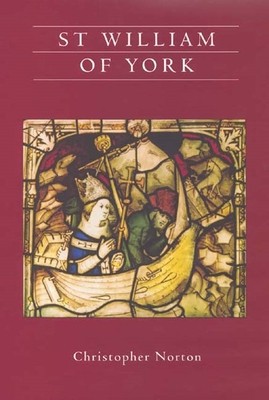
- We will send in 10–14 business days.
- Author: Christopher Norton
- Publisher: York Medieval Press
- Year: 2014
- Pages: 289
- ISBN-10: 190315359X
- ISBN-13: 9781903153598
- Format: 15.6 x 23.4 x 1.6 cm, minkšti viršeliai
- Language: English
- SAVE -10% with code: EXTRA
Reviews
Description
First full study of the life and career of St William of York, revealing his importance to the medieval church.
St William of York achieved the unique distinction of being elected archbishop of York twice and being canonised twice. Principally famous for his role in the York election dispute and the miracle of Ouse bridge, William emerges from this, the first full-length study devoted to him, as a significant figure in the life of the church in northern England and an interesting character in his own right. William's father, Herbert the Chamberlain, was a senior official in the royal treasury at Winchester who secured William's initial preferment at York; the importance of family connections, particularly after his cousin Stephen became king, forms a recurring theme. Dr Norton describes howhe was early on involved in the primacy dispute with Canterbury, and after his father attempted to assassinate Henry I, he spent some years abroad with Archbishop Thurstan. William knew some of the earliest Yorkshire Cistercians, who were subsequently among his fiercest opponents during his first episcopate, which is here reconsidered in the light of new evidence: he emerges from the affair with much greater credit, St Bernard with correspondingly less. Retiring to Winchester after his deposition, he was elected archbishop a second time in 1153, but died the next year amid suspicions of murder. Miracles at his tomb in 1177 led to his veneration as a saint. The book concludes with the bull of canonisation issued by Pope Honorius III in 1226. CHRISTOPHER NORTON is Professor of the History of Art, University of York.EXTRA 10 % discount with code: EXTRA
The promotion ends in 21d.14:59:57
The discount code is valid when purchasing from 10 €. Discounts do not stack.
- Author: Christopher Norton
- Publisher: York Medieval Press
- Year: 2014
- Pages: 289
- ISBN-10: 190315359X
- ISBN-13: 9781903153598
- Format: 15.6 x 23.4 x 1.6 cm, minkšti viršeliai
- Language: English English
First full study of the life and career of St William of York, revealing his importance to the medieval church.
St William of York achieved the unique distinction of being elected archbishop of York twice and being canonised twice. Principally famous for his role in the York election dispute and the miracle of Ouse bridge, William emerges from this, the first full-length study devoted to him, as a significant figure in the life of the church in northern England and an interesting character in his own right. William's father, Herbert the Chamberlain, was a senior official in the royal treasury at Winchester who secured William's initial preferment at York; the importance of family connections, particularly after his cousin Stephen became king, forms a recurring theme. Dr Norton describes howhe was early on involved in the primacy dispute with Canterbury, and after his father attempted to assassinate Henry I, he spent some years abroad with Archbishop Thurstan. William knew some of the earliest Yorkshire Cistercians, who were subsequently among his fiercest opponents during his first episcopate, which is here reconsidered in the light of new evidence: he emerges from the affair with much greater credit, St Bernard with correspondingly less. Retiring to Winchester after his deposition, he was elected archbishop a second time in 1153, but died the next year amid suspicions of murder. Miracles at his tomb in 1177 led to his veneration as a saint. The book concludes with the bull of canonisation issued by Pope Honorius III in 1226. CHRISTOPHER NORTON is Professor of the History of Art, University of York.

Reviews